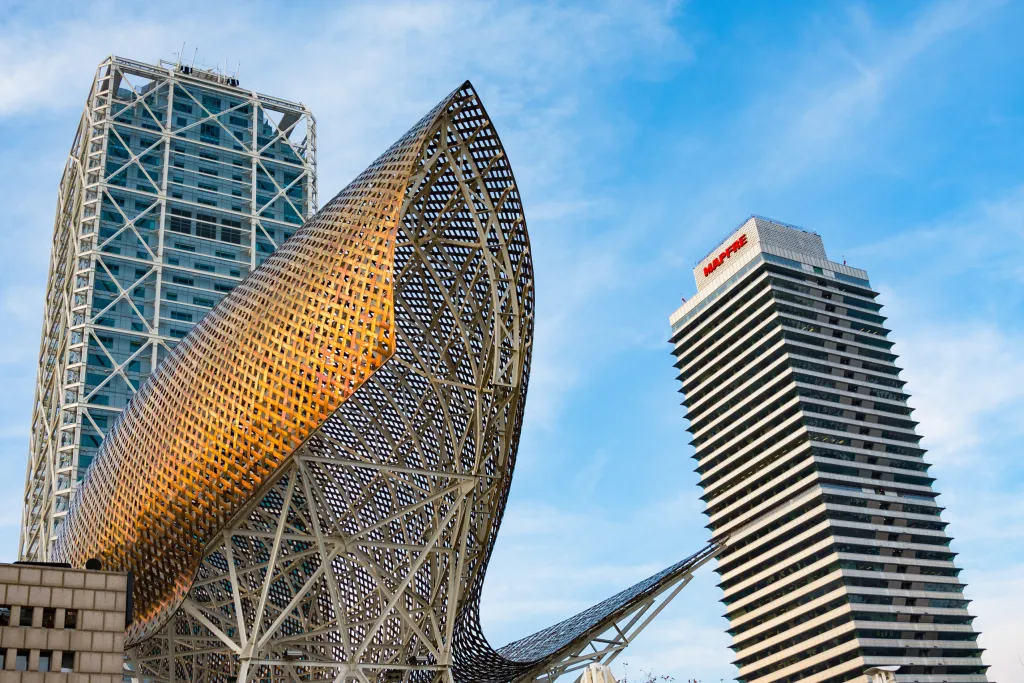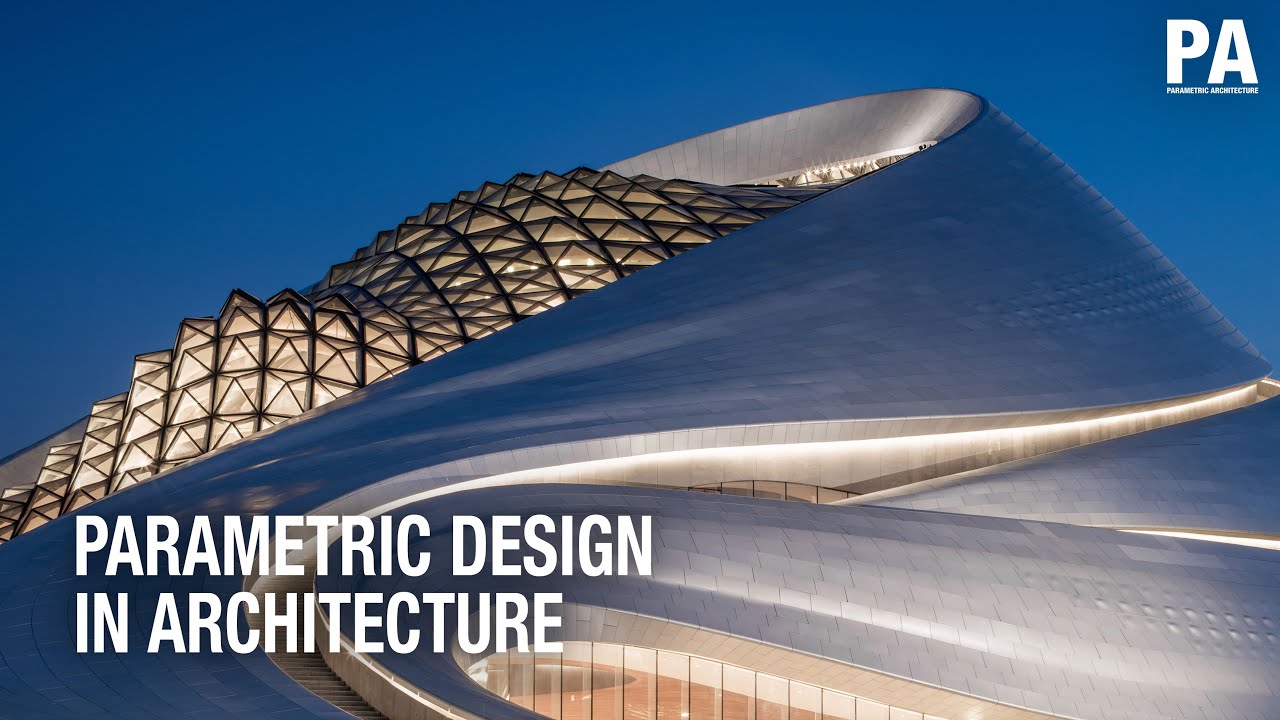Parametric Design - Exploring The Intersection Of Mathematics And Architecture
Parametric design is a powerful approach to designing complex and sophisticated architectural forms. This design method is rooted in the use of algorithms and computational tools to create parametric models that can generate a range of design solutions based on specific parameters and rules.
Author:George EvansMar 11, 202312 Shares345 Views

Parametric designis a powerful approach to designing complex and sophisticated architectural forms. This design method is rooted in the use of algorithms and computational tools to create parametric models that can generate a range of design solutions based on specific parameters and rules.
With the rise of advanced computational technologies, parametric design has become increasingly popular in the field of architecture, offering new possibilities for exploring complex geometries and enhancing design efficiency.

Parametric Design in Architecture
Techniques And Tools Of Parametric Design
Parametric design is a digital design approach that uses algorithms and parameters to create complex and adaptable designs. Here are some techniques and tools commonly used in parametric design:
Generative Components
Generative components are a type of software used in parametric design that allows designers to create complex 3D models using algorithms and rules.
This software is capable of creating intricate and adaptive designs that can be easily modified.
Grasshopper
Grasshopper is a popular plugin for the 3D modeling software Rhino that is commonly used in parametric design.
It allows designers to create complex and dynamic designs by creating and manipulating geometric relationships between objects.
Python Scripting
Python scripting is a programming language commonly used in parametric design to create scripts that automate tasks and create complex geometry.
It is a powerful tool for creating custom workflows and automating repetitive tasks.
CAD Software
Many CAD software packages, such as SolidWorks and Autodesk Fusion 360, now include parametric design features that allow designers to create complex and adaptable designs.
3D Printing
3D printing is an important tool in the parametric design process, as it allows designers to quickly and easily create physical prototypes of their designs.
The ability to rapidly iterate and test designs is crucial in the design process, and 3D printing enables designers to do so quickly and cost-effectively.
Applications Of Parametric Design
Here are some applications of parametric design:
- Architecture: Parametric design can be used to create complex and intricate building designs that are impossible to achieve using traditional design methods. For example, the Beijing National Stadium (also known as the Bird's Nest) was designed using parametric design techniques.
- Product design: Parametric design can be used to create complex and customizable products that can be manufactured quickly and efficiently. For example, shoe companies like Nike and Adidas use parametric design to create customized shoes for their customers.
- Industrial design: Parametric design can be used to create complex machinery and equipment designs that are efficient and cost-effective. For example, aerospace companies use parametric design to create complex airplane parts that are lightweight and strong.
- Fashion design: Parametric design can be used to create unique and customizable clothing designs that are tailored to each individual's measurements. For example, Nervous System, a design studio, uses parametric design to create custom-fit dresses and jewelry.
- Medical design: Parametric design can be used to create personalized medical devices and prosthetics that fit the unique needs of each patient. For example, prosthetic limbs can be designed using parametric design to create a customized fit for each individual patient.
Overall, parametric design offers a flexible and efficient way to approach design, allowing designers to create complex and innovative designs that would be difficult or impossible to achieve using traditional design methods.
Advantages Of Parametric Design
Parametric design offers several advantages over traditional design methods, including:
Flexibility
Parametric design allows designers to easily make changes to their designs, even late in the design process.
This flexibility means that designers can explore more design alternatives and iterations, leading to better designs and more efficient design processes.
Efficiency
With parametric design, designers can create complex and intricate designs quickly and easily, saving time and effort compared to traditional design methods. This efficiency can be particularly valuable in industries where time-to-market is critical.
Customization
Parametric design allows for easy customization of designs to meet specific user needs or requirements. For example, parametric design can be used to create personalized medical devices or customized shoes.
Optimization
Parametric design allows for the optimization of design elements based on specific performance criteria, such as strength, weight, or energy efficiency.
This optimization can lead to better-performing designs and more efficient use of materials.
Collaboration
Parametric design can facilitate collaboration between designers and other stakeholders, such as engineers, clients, or end-users.
By sharing design parameters and rules, stakeholders can work together to create more effective and innovative designs.
Overall, parametric design offers a flexible, efficient, and collaborative approach to design that can lead to better designs, faster design processes, and more customized solutions.
People Also Ask
How Does Parametric Design Differ From Traditional Design Methods?
Parametric design differs from traditional design methods in that it uses algorithms and mathematical equations to generate complex and intricate designs that can be easily modified and adapted to different contexts.
What Are Some Common Software Tools Used For Parametric Design?
Some common software tools used for parametric design include Grasshopper, Rhino, Dynamo, and Revit. These tools enable designers to create complex, customizable designs that can be quickly and easily modified.
How Is Parametric Design Being Used In The Field Of Architecture?
Parametric design is being used in architecture to create complex, multi-layered structures that respond to a variety of factors such as environmental conditions, user needs, and aesthetic preferences.
These structures can be easily modified and adapted to changing contexts, making them highly flexible and responsive.
What Are The Advantages Of Using Parametric Design In Product Design?
Parametric design allows product designers to quickly create and test a wide range of design options, enabling them to explore different configurations, materials, and production methods.
This can lead to more innovative and efficient products that are better suited to user needs and market demands.
How Is Parametric Design Being Used In Urban Planning?
Parametric design is being used in urban planningto create dynamic and responsive urban environments that can adapt to changing needs and conditions.
By using algorithms and data-driven approaches, designers can create urban spaces that are optimized for factors such as traffic flow, energy efficiency, and pedestrian safety.
Final Words
Parametric design is a powerful and innovative design approach that allows architects and designers to create complex and intricate structures and forms.
Through the use of algorithms, parametric design can optimize the design process and produce more efficient, sustainable, and visually striking buildings and products.
As technology continues to advance and evolve, the possibilities for parametric design are endless, and it is sure to play a significant role in shaping the future of architecture and design.

George Evans
Author
George Anderson, an exceptional architectural designer, envisions and brings to life structures that transcend the realm of imagination. With an unwavering passion for design and an innate eye for detail, George seamlessly blends form and function, creating immersive spaces that inspire awe.
Driven by a deep appreciation for the interplay of space, light, and materials, George's innovative approach redefines the possibilities of architectural design. His visionary compositions leave an indelible mark, evoking a sense of wonder and transforming the built environment.
George Anderson's transformative designs and unwavering dedication continue to shape the architectural landscape, pushing the boundaries of what is possible and inspiring generations to come.
Latest Articles
Popular Articles